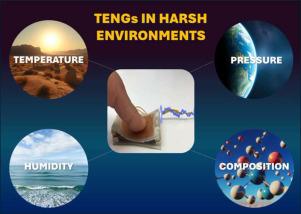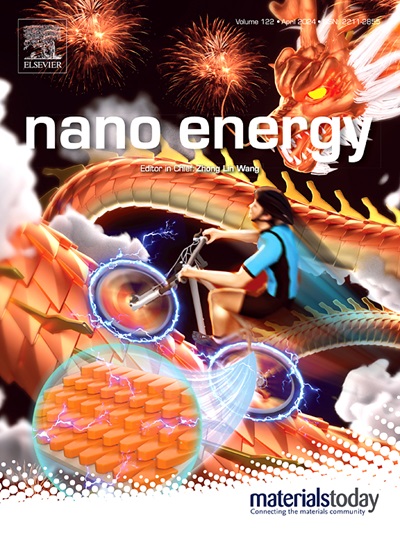苛刻条件下的摩擦电纳米发电机:综述
IF 16.8
1区 材料科学
Q1 CHEMISTRY, PHYSICAL
引用次数: 0
摘要
能源消费的迅速增长和气候危机的加剧导致了对清洁能源研究的激增。摩擦电纳米发电机(TENGs)是一种能量收集器,它以一种高效的方式将机械能转化为电能。它们成本低,重量轻,灵活,需要有限的维护并且环保,因此对于可穿戴设备,自供电传感器或海上部署等广泛应用非常有吸引力。然而,恶劣的环境条件仍然阻碍了它们的性能。高湿分散了积累的电荷,而高温有利于电子发射,降低了表面电荷密度。大气中的空气成分会导致摩擦材料的电荷趋势发生变化,而压力会阻碍或增强静电击穿条件。在这里,我们全面回顾了现有的关于TENG输出如何依赖于环境因素以及如何调整材料特性以在恶劣条件下保持甚至提高TENG性能的文献。这些是获得可靠和强大的设备以及扩大TENG应用范围走向商业化的关键方面。本文章由计算机程序翻译,如有差异,请以英文原文为准。

Triboelectric nanogenerators in harsh conditions: A critical review
The rapid rise in energy consumption and an accelerating climatic crisis has resulted in a surge in the study of clean energy sources. Triboelectric nanogenerators (TENGs) are energy harvesters that convert mechanical into electrical energy in a highly efficient manner. They are low cost, light, flexible, require limited maintenance and are environmentally friendly, being therefore very attractive for a large range of applications, such as wearables, self-power sensors or maritime deployment. However, harsh environmental conditions still hinder their performance. High humidity disperse the accumulated charge, while high temperatures facilitate electron emission and decrease surface charge density. Air components in the atmosphere can lead to changes in the charge tendency of tribomaterials, while pressure can hinder or enhance electrostatic breakdown conditions. Here, we thoroughly review the available literature on how TENGs outputs depend on environmental factors and how to tune material properties to preserve or even enhance TENG performance under harsh conditions. These are crucial aspects to obtain reliable and robust devices and to broaden TENG application spectrum towards commercialization.
求助全文
通过发布文献求助,成功后即可免费获取论文全文。
去求助
来源期刊

Nano Energy
CHEMISTRY, PHYSICAL-NANOSCIENCE & NANOTECHNOLOGY
CiteScore
30.30
自引率
7.40%
发文量
1207
审稿时长
23 days
期刊介绍:
Nano Energy is a multidisciplinary, rapid-publication forum of original peer-reviewed contributions on the science and engineering of nanomaterials and nanodevices used in all forms of energy harvesting, conversion, storage, utilization and policy. Through its mixture of articles, reviews, communications, research news, and information on key developments, Nano Energy provides a comprehensive coverage of this exciting and dynamic field which joins nanoscience and nanotechnology with energy science. The journal is relevant to all those who are interested in nanomaterials solutions to the energy problem.
Nano Energy publishes original experimental and theoretical research on all aspects of energy-related research which utilizes nanomaterials and nanotechnology. Manuscripts of four types are considered: review articles which inform readers of the latest research and advances in energy science; rapid communications which feature exciting research breakthroughs in the field; full-length articles which report comprehensive research developments; and news and opinions which comment on topical issues or express views on the developments in related fields.
 求助内容:
求助内容: 应助结果提醒方式:
应助结果提醒方式:


